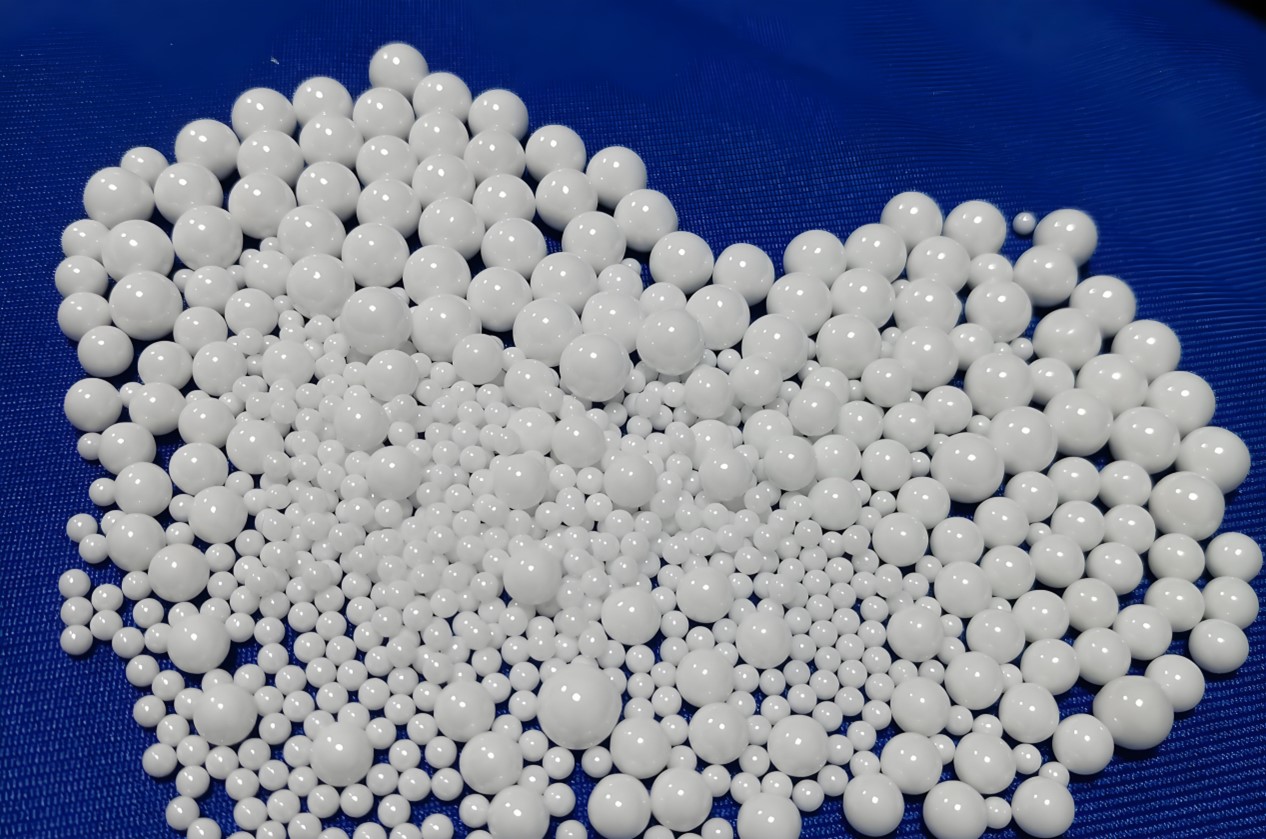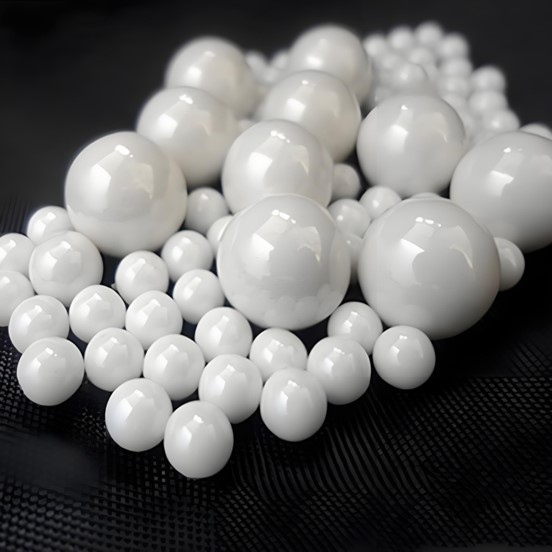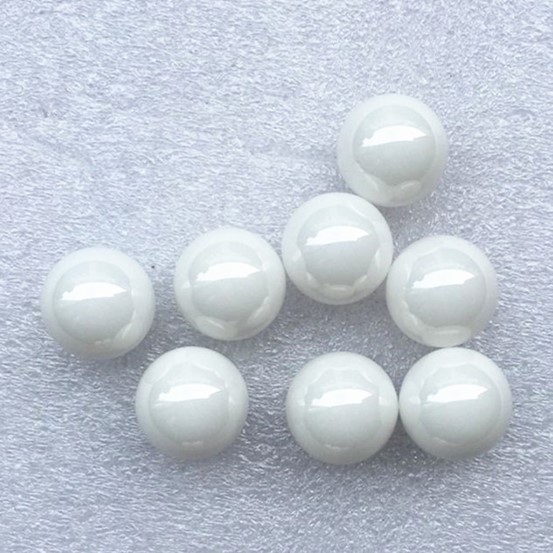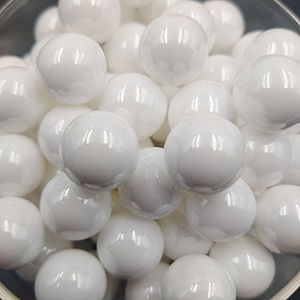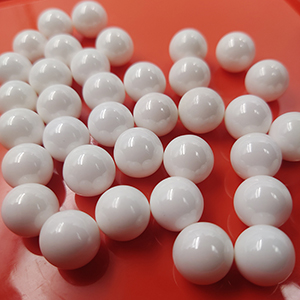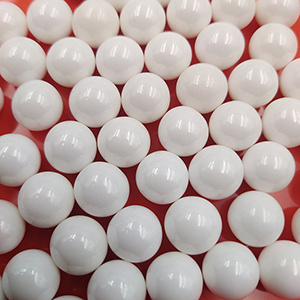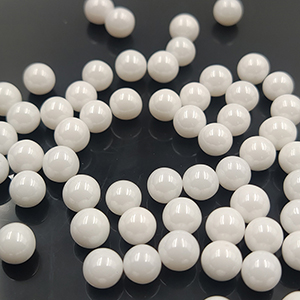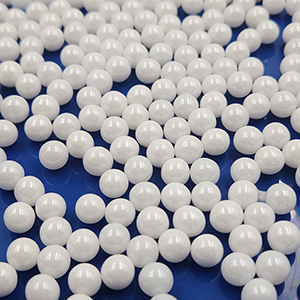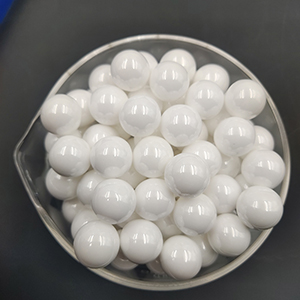The Relationship Between Zirconia Balls and Grinding Particle Size
Revealing the Relationship between Zirconium Balls and Grinding Particle Size: How to Precisely Control Grinding Effect
In the field of material processing, grinding is a crucial process, and the size of the grinding particle size directly affects the performance and quality of the final product. Among various Grinding Media, zirconium balls stand out with their unique properties and have become a highly favored choice. So, what exactly is the relationship between zirconium balls and the grinding particle size? Next, we will delve into the mystery within.
Understanding Zirconium Balls: Outstanding Performance Lays the Foundation
Zirconia Balls, also known as zirconia ceramic balls, are high-performance grinding media made from zirconia as the main raw material through high-temperature sintering. It has many excellent properties, laying the foundation for its important role in the grinding process.
High hardness: The hardness of zirconium balls is second only to that of super-hard materials such as diamond, which enables them to effectively impact and cut materials during the grinding process, breaking down hard particles. For instance, when grinding materials with high hardness such as metal ores, zirconium balls can easily handle the situation with their high hardness, gradually breaking large pieces of ores into smaller particles.
High density: The higher density endows zirconium balls with greater inertia and impact force. In grinding equipment, when zirconium balls move at high speed, due to their high density, they can generate a stronger impact force, more effectively crush materials, and accelerate the grinding process.
Low wear: The wear rate of zirconium balls is extremely low, which means that during a long grinding process, their own wear is small, maintaining stable performance and also reducing contamination to the material. Take coating grinding as an example. Low-wear zirconium balls will not introduce impurities due to their own wear, ensuring the purity and quality of the coating.
Zirconium ball size: Different sizes result in different grinding effects
The size of zirconium balls is one of the key factors affecting the grinding particle size. Zirconium balls of different sizes exhibit different characteristics and effects during the grinding process.
Large-sized zirconium balls: Large-sized zirconium balls have greater mass and stronger impact force, and are suitable for the rough grinding stage. At this stage, the main task is to break the larger material particles into smaller ones. Large zirconium balls, with their powerful impact force, can quickly crush large pieces of materials and significantly reduce the particle size of the materials. For instance, during the coarse grinding process of ceramic raw materials, the use of large-sized zirconium balls can quickly crush the raw materials to a certain particle size range, preparing for the subsequent fine grinding process. However, due to their large size and relatively small contact area with the material, large zirconium balls have certain limitations in fine grinding and it is difficult to grind the material to a very fine particle size.
Small-sized zirconium balls: Although the impact force of each small-sized zirconium ball is relatively small, they are numerous and have a larger contact area with the material, which can provide a more uniform grinding effect. Therefore, small zirconium balls are more suitable for the fine grinding stage, further refining the materials that have already undergone coarse grinding to meet the required particle size requirements. In the grinding of electronic materials, such as the preparation of cathode materials for lithium batteries, it is necessary to grind the materials to the particle size of micrometers or even nanometers. At this time, small-sized zirconium balls play an important role. Through the continuous grinding and collision of small zirconium balls, the material particles can gradually become smaller, meeting the strict requirements of the product for particle size.
The number of zirconium balls and filling rate: affect grinding efficiency and particle size
In addition to the size of the zirconium balls, the number of zirconium balls and their filling rate in the grinding equipment also have an impact on the grinding particle size.
The influence of quantity: Within a certain range, increasing the number of zirconium balls can enhance grinding efficiency and help reduce the grinding particle size. More zirconium balls mean more collision opportunities and can come into contact with materials more frequently, thereby accelerating the crushing and refinement process of materials. However, if there are too many zirconium balls, their mutual collisions will be too frequent, resulting in increased energy consumption. At the same time, it may also affect the flow of materials in the grinding equipment, thereby reducing the grinding efficiency.
The influence of filling rate: The filling rate refers to the volume proportion of zirconium balls in the grinding equipment. An appropriate filling rate is crucial for obtaining the ideal grinding particle size. Generally speaking, an excessively high filling rate will impede the flow of materials within the equipment, affecting the grinding effect. If the filling rate is too low, it will reduce the contact opportunities between the zirconium balls and the materials, and lower the grinding efficiency. Different grinding equipment and material properties require different filling rates. For instance, in a sand mill, for some materials with higher viscosity, the filling rate is usually controlled between 60% and 80% to ensure good grinding effect and particle size control.
Selection and optimization in practical applications
In actual industrial production, rationally selecting the size, quantity and filling rate of zirconium balls based on the properties of different materials and the particle size requirements of the products is the key to achieving precise grinding.
Material properties: For materials with high hardness and large initial particle size, zirconium balls with larger particle size should be given priority for coarse grinding to improve the crushing efficiency. For materials with lower hardness that require fine grinding, zirconium balls with smaller particle sizes are more suitable. For instance, when grinding quartz sand, due to its high hardness, first use large zirconium balls for coarse grinding, and then use small zirconium balls for fine grinding, which can achieve an ideal particle size distribution.
Product requirements: Different products have different requirements for particle size. If the product requires uniform fine particle size, then during the grinding process, the size and quantity of zirconium balls should be reasonably matched, and the filling rate should be well controlled to ensure that the grinding effect meets the requirements. For instance, when manufacturing pigments for cosmetics, the particle size requirements for the pigments are extremely strict. Small-sized zirconium balls and an appropriate filling rate are needed to obtain fine and uniform pigment particles.
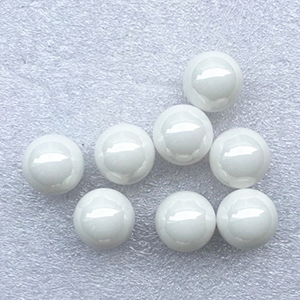
There exists a close and complex relationship between zirconium balls and the grinding particle size. By understanding the characteristics of zirconium balls and rationally selecting the size, quantity and filling rate of zirconium balls, the grinding particle size can be precisely controlled to meet the demands of different industries and products. In the future field of material processing, with the continuous advancement of technology, the research and application of the relationship between zirconium balls and grinding particle size will also be further deepened, providing strong support for achieving more efficient and precise grinding processes.
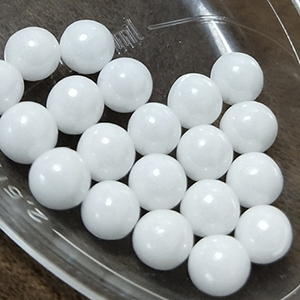
The above article elaborates in detail the relationship between zirconium balls and grinding particle size. If you think the details, style or other aspects of the content need to be adjusted, or if you have any other supplementary requirements, please feel free to tell me at any time.

